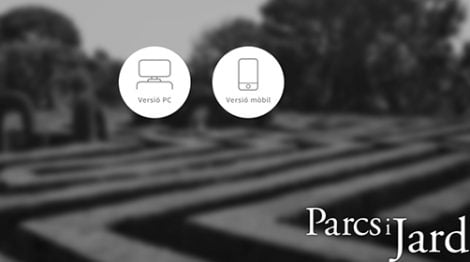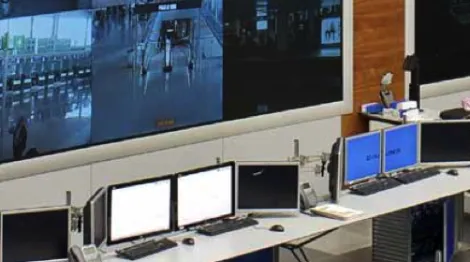How Proactive and Efficient is My Maintenance Strategy?
In order to implement a comprehensive maintenance strategy, it is necessary to understand the maintenance maturity pyramid and know how to apply each level of maintenance according to the criticality ...


In the current industrial context, how efficient the strategies we apply in the different areas that make up an organization is increasingly relevant. Efficiency and proactivity in organizations are key to reducing the execution times of business processes, as well as the analysis times for strategic decision-making, which as a final consequence have an important economic impact on finances.
One of the areas that is increasingly relevant at the business level and that has a direct impact on the efficiency of a plant is the maintenance area. Therefore, in this post we are going to focus on determining what degree of proactivity and efficiency the maintenance strategy that I am applying gives me and how I can increase them.
Maturity Pyramid
The ultimate goal of maintenance departments is to implement a maintenance strategy that increases the availability, safety and reliability of assets at the lowest possible cost.
And today, thanks to the new technologies available such as IIoT, Artificial Intelligence, Machine Learning, cloud technologies, Big Data management and many others, organizations can optimize their maintenance strategy while reducing both maintenance and operations costs.
In order to implement a comprehensive maintenance strategy, it is necessary to know the maintenance maturity pyramid and know how to apply each level of maintenance according to the criticality of the asset and its impact on the business.

Maturity pyramid in maintenance
- The first and most basic level is reactive maintenance, which consists of not performing any maintenance action on the asset and only performing corrective maintenance on it in case of failure or breakdown. This maintenance strategy should be applied to those non-critical assets whose immediate impact in case of failure is irrelevant or none in safety or availability and the costs of repair or replacement are low.
- In the second level we find preventive maintenance. It could be considered the first phase towards proactive and efficient maintenance. Preventive maintenance programs are based on executing preventive maintenance actions on equipment with the objective of trying to detect and avoid a possible breakdown before it occurs. These maintenance programs are based on the execution of planned maintenance based on time or according to operational statistics of the equipment. These maintenance programs are managed with CMMS (Computerized Maintenance Management) tools. If you want to learn more about these tools, you can read the post “What is a CMMS and what is it for?”.
According to several studies carried out by different companies expert in maintenance, only 18% of breakdowns are related to aging, the age of the assets or the use. In other words, with a preventive maintenance program we can only try to mitigate approximately 18% of breakdowns that our assets may suffer.
In order to reduce to the minimum possible the remaining 82% of the breakdowns suffered by the assets, it is necessary to apply maintenance strategies such as Condition Based Maintenance (CBM) or Predictive Maintenance (PdM).
1. Condition Based Maintenance (CBM).
The Condition Based Maintenance (CBM) is a maintenance strategyo highly proactive and efficient to mitigate those failures in the equipment that we have measurable parameters and that we know when the deviation of them indicates an imminent problem.
This maintenance strategy is focused on the current operating condition of the assets, in such a way that it will be the asset that tells us when it requires a maintenance action. To implement this strategy it is necessary to define the operating conditions that will require specific maintenance actions.
These conditions will be defined through the implementation of logics based on rules, which will not change according to the load or the environmental and operational conditions. Thanks to the technologies existing today, it is possible to automate this strategy by obtaining the field data in real time and generating requests or work orders automatically when the condition is met, thus obtaining a more proactive and efficient approach.
2. Predictive Maintenance (Pdm).
At a higher level, we find Predictive Maintenance (PdM) for the most critical and complex assets of organizations. Thanks to this maintenance strategy we will be able to answer the question “What will happen?”, instead of asking ourselves the questions “Why has it happened?” or “What is happening?”.
The predictive analysis software allow to generate models of the optimal behavior of our asset based on its own historical data, regardless of the environmental, load or operational process conditions. Subsequently, these softwares analyze the data collected by the equipment’s sensors in real time and compare them with the data of the model using advanced analytical modeling techniques.
When subtle and imperceptible deviations occur between the real-time data and the data of the expected behavior model, the software generates an alert. This early alert will indicate the possibility of a future failure and thanks to the analytical capabilities of the software in failure diagnosis and root cause analysis will help users to analyze and program the resolution of the deviation before it becomes a serious problem that affects the operations of the organization.
2. Risk Based Maintenance (RBM).
Finally, in the last level we find Risk Based Maintenance (RBM). This is a comprehensive maintenance strategy, which allows organizations to go beyond the prevention of breakdowns and achieve the optimization of the entire organization in the approach and strategies applied to each asset according to its criticality.
In short, this type of solutions allow organizations to simulate different scenarios of maintenance strategies to determine which one or which are the best strategies (previously described in the previous levels) to apply in each of the assets of the organization according to their business policies.

This solution allows organizations to understand which assets are more critical to achieve their business objectives and thus focus attention on them, performing a more rigorous and priority supervision on them. The implementation of this comprehensive maintenance strategy will allow organizations to achieve excellence in the different maintenance strategies, thus being highly proactive and efficient.
As a note, I would like to emphasize that this pyramid does not indicate the steps to follow to obtain the most proactive and efficient maintenance strategy in our organization, but only indicates the different levels of maturity in maintenance of an organization. With this, I mean that, if we currently find that we only have implemented a preventive maintenance strategy, we do not have to go up level by level.
There are organizations that before implementing any of the strategies described above, prefer to perform Risk Based Maintenance studies to determine which maintenance strategy they will apply to each asset, and subsequently, invest in the technological solutions required to achieve their reliability and availability objectives.
Conclusion
Currently, many organizations are applying only a preventive maintenance strategy, which helps them to mitigate approximately 18% of the breakdowns that their assets may suffer. This strategy alone is not efficient, and must be complemented with strategies such as Condition Based Maintenance (CBM) and Predictive Maintenance (PdM) to prevent the maximum number of possible breakdowns and thus be more proactive and efficient. However, to achieve excellence in maintenance it is necessary to implement a comprehensive strategy such as Risk Based Maintenance, being able to determine which maintenance strategy is most optimal for each asset according to its criticality and economic impact for the organization.
Finally, we can conclude that it is not about choosing one strategy or another, but about implementing the strategy, or strategies, that each asset requires in our organization to obtain the maximum return on investment of each of them.





